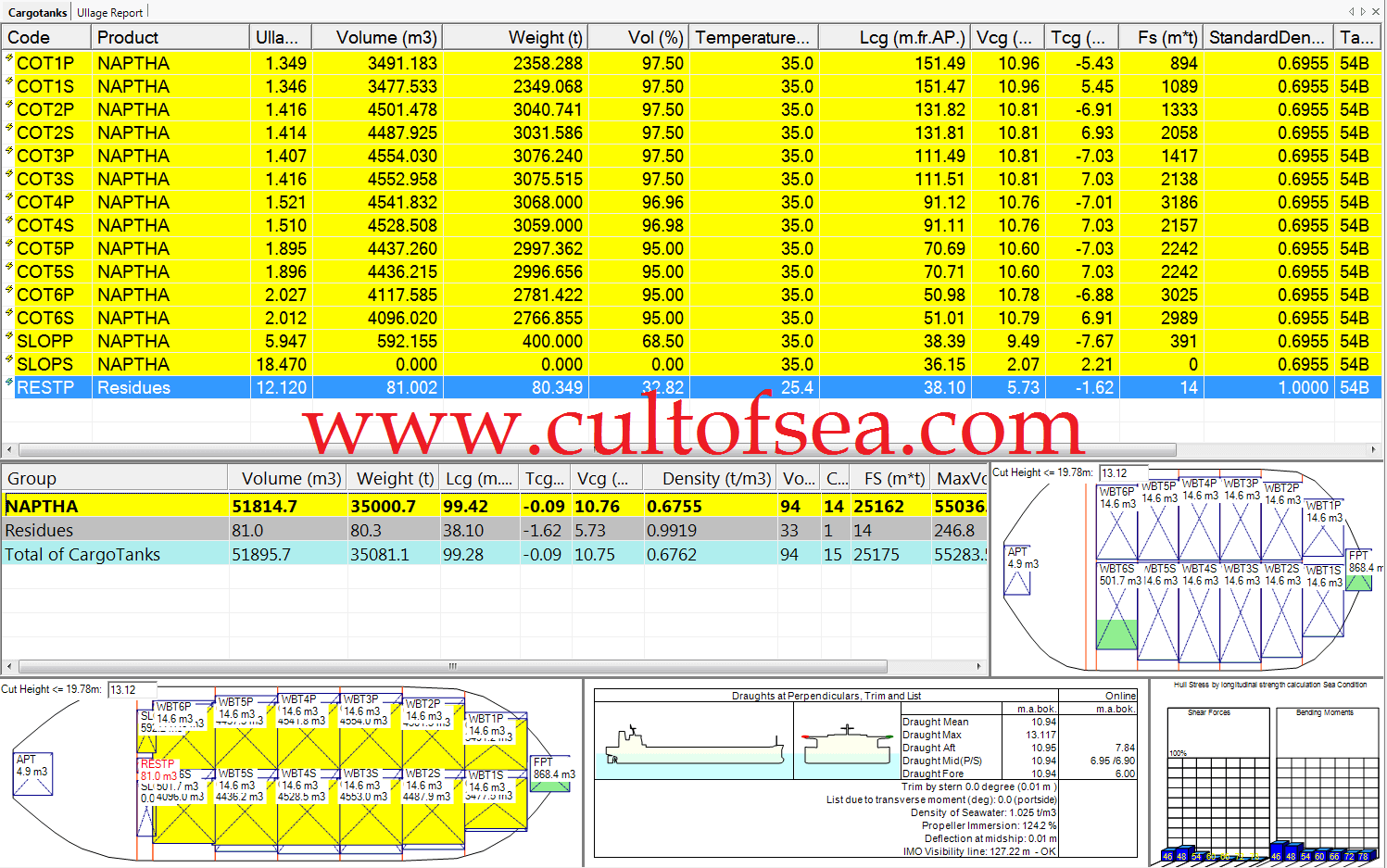Density of a substance is its mass per unit volume, normally expressed as tonnes per cubic metre in ship calculations.
Relative Density of a substance is the ratio between the density of that substance and the density of fresh water.
Displacement of the ship is the weight of the ship and its contents or the weight of water displaced by the ship in that condition.
Displacement = Underwater volume of the ship x the density of the water in which she is floating.
It should be noted that the volume of displacement is the underwater volume of the ship. When a ship proceeds from water of one density to water of another density, the volume of displacement changes, whereas the displacement remains unchanged.
Hydrostatic Draft Or True Mean Draft is the draft at the centre of floatation. When the ship is on an even keel, the drafts forward and aft, the mean draft and the hydrostatic draft are all the same.
TPC (Tonnes per centimetre Immersion) at any draft is the weight in tonnes which should be loaded or discharged to change the vessel’s mean draft by one centimetre, in saltwater.
TPC= (1.025 x area of ship’s water plane) / 100
MCTC or MCT 1 cm (Moment To Change Trim By One Centimetre) is the moment required to change the total trim of the vessel by one centimetre.
MCTC = [W x GM(l)] / [100 x L]
COB (Centre of Buoyancy) is the geometric centre of the underwater volume of the ship. The entire buoyancy provided by the displaced water may be considered to act vertically upwards through this point.
COG (Centre of Gravity) of a ship is the point through which the force of gravity may be considered to act vertically downwards with a force equal to the weight of the ship. The position of COG of a ship is indicated by its distance in meters from its height above keel (KG), its distance from after perpendicular (AG) and its distance from center line of the ship (GG1).
LCB (Longitudinal Centre of Buoyancy) is the longitudinal separation between the After Perpendicular and the centre of buoyancy.
VCB (Vertical Centre of Buoyancy) is the vertical separation between the keel and the centre of buoyancy.
CF (Centre of Floatation) is the centroid of the ship’s water plane area.
LCF (Longitudinal Centre of Floatation) is the longitudinal separation between the After Perpendicular and the Centre of Floatation.
M (Transverse Metacentre) is the point of intersection of the vertical lines through the Centres of Buoyancy in the upright condition and the vertical line through the centre of Buoyancy in slightly inclined condition.
KM is the vertical separation between the keel and the transverse metacentre.
M(l) (Longitudinal Metacentre) is the point of intersection of the vertical line through the Centre of Buoyancy in the even keel condition and the vertical line through the Centre of Buoyancy in a slightly trimmed condition.
KM(l) is the vertical separation between the keel and the longitudinal metacentre.
GM (Metacentric Height) is the vertical separation between the centre of gravity and the transverse metacentre.

How the COF n longitudinal metacentre are related in the same diagram if needed to be shown ?(taking trimmed once and pitched condition )
Hello Kalita, both parameters of COF and longitudinal metacentre (ML) are a part of longitudinal stability. Explained nicely in a better article.
https://www.cultofsea.com/ship-stability/longitudinal-stability-ships/
Hope this helps.